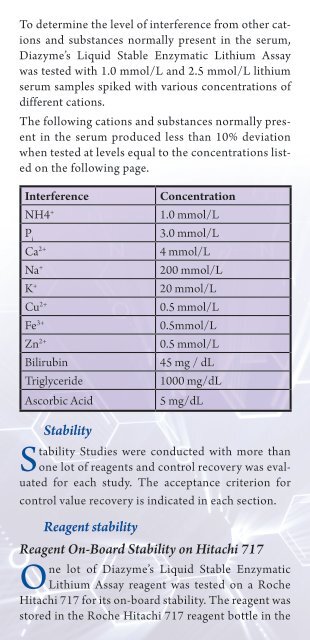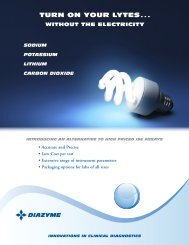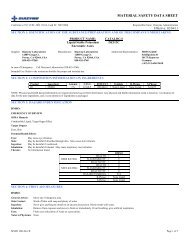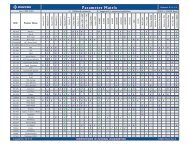Lithium test - Diazyme Laboratories
Lithium test - Diazyme Laboratories
Lithium test - Diazyme Laboratories
Create successful ePaper yourself
Turn your PDF publications into a flip-book with our unique Google optimized e-Paper software.
To determine the level of interference from other cations<br />
and substances normally present in the serum,<br />
<strong>Diazyme</strong>’s Liquid Stable Enzymatic <strong>Lithium</strong> Assay<br />
was <strong>test</strong>ed with 1.0 mmol/L and 2.5 mmol/L lithium<br />
serum samples spiked with various concentrations of<br />
different cations.<br />
The following cations and substances normally present<br />
in the serum produced less than 10% deviation<br />
when <strong>test</strong>ed at levels equal to the concentrations listed<br />
on the following page.<br />
Interference Concentration<br />
NH4 + 1.0 mmol/L<br />
Pi 3.0 mmol/L<br />
Ca2+ 4 mmol/L<br />
Na + 200 mmol/L<br />
K + 20 mmol/L<br />
Cu2+ 0.5 mmol/L<br />
Fe3+ 0.5mmol/L<br />
Zn2+ 0.5 mmol/L<br />
Bilirubin 45 mg / dL<br />
Triglyceride 1000 mg/dL<br />
Ascorbic Acid 5 mg/dL<br />
Stability<br />
Stability Studies were conducted with more than<br />
one lot of reagents and control recovery was evaluated<br />
for each study. The acceptance criterion for<br />
control value recovery is indicated in each section.<br />
Reagent stability<br />
Reagent On-Board Stability on Hitachi 717<br />
O ne lot of <strong>Diazyme</strong>’s Liquid Stable Enzymatic<br />
<strong>Lithium</strong> Assay reagent was <strong>test</strong>ed on a Roche<br />
Hitachi 717 for its on-board stability. The reagent was<br />
stored in the Roche Hitachi 717 reagent bottle in the<br />
reagent chamber. In this study, two levels of controls<br />
containing 1.08 mmol/L, and 2.03 mmol/L were <strong>test</strong>ed<br />
daily and after each calibration. Based on the <strong>test</strong><br />
results, the reagent on-board stability on the Hitachi<br />
717 instrument is a minimum of 4 weeks.<br />
Reagent Calibration Frequency<br />
The calibration stability was performed on<br />
a Roche Hitachi 917 using the appropriate<br />
parameters including reagent and calibrators,<br />
and two levels of serum controls containing approximately<br />
1.1 mmol/L, and 2.2 mmol/L lithium. After<br />
running the calibration at day 0, two levels of controls<br />
and one serum sample were <strong>test</strong>ed on the same<br />
day followed by another fourteen (14) days. Controls<br />
and sample recovered within 10% deviation<br />
from the expected values. Based on the <strong>test</strong> results,<br />
the reagent calibration curve stability on the Roche<br />
Hitachi 917 instrument is a minimum of 14 days.<br />
5. Frequently asked questions<br />
regarding lithium <strong>test</strong>ing<br />
1. Why use enzymatic lithium <strong>test</strong>ing?<br />
The method is more accurate and more cost effective.<br />
It has longer on-board and calibration<br />
curve stability, and the reagent is not caustic to<br />
instruments and the environment.<br />
2. What are the advantages of the enzymatic<br />
lithium <strong>test</strong> over the Thermo Trace<br />
porphyrin dye based lithium <strong>test</strong>?<br />
The advantages include:<br />
• Highly specific and less interference<br />
• Longer on-board reagent stability<br />
(≥ 4 weeks*), and longer calibration<br />
curve stability (>2 weeks)








